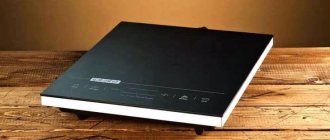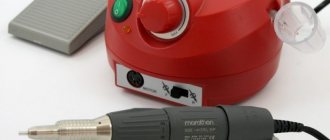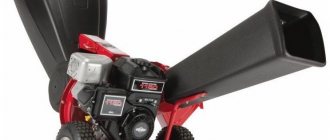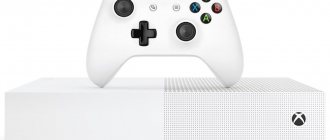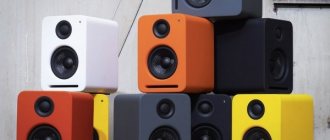Hearing problems? Adults and children with hearing loss may have varying degrees of auditory perception disorder. What are these disorders?
- Depending on the manifestation, quiet, medium and loud sounds are not heard; All sounds are heard quieter than they actually are; The speech of the people around you sounds unintelligible, and there is a strong feeling that those around you are not speaking clearly.
- Loud sounds can cause physical discomfort (observed in some patients).
- The perception of high-pitched sounds - whistling, hissing, dull consonants or consonant sounds in general - is impaired.
- The ability to distinguish between 2 different sounds by frequency, duration or pitch is impaired.
- Binaural hearing is impaired: it is difficult to determine the source of sound, difficulty understanding speech in noise, difficulty understanding speech when talking with several speakers at the same time, in rooms with high ceilings (churches).
- The presence of continuous or frequently occurring noise/ringing in the head or ears, which has a negative impact on speech intelligibility, a person’s emotional state, and even performance (observed in some patients).
- Slow speech processing speed
- Due to the fact that the main problem of auditory perception is that sounds are heard quieter than they actually are or are not audible, hearing aids help most people cope with this problem.
What is a hearing aid?
A hearing aid (HA) is a device for amplifying speech and other sounds.
Main functions of the hearing aid:
- Amplification of sounds
- Ensuring the purity and quality of amplified sound
Without what parts is a hearing aid impossible? A hearing aid is a high-tech device consisting of the following parts:
- A microphone or two microphones. The microphones in the hearing aid pick up sounds around you and transform them into electrical signals.
- Amplifier – necessary to amplify the electrical signal. The power of the hearing aids depends on the power of the amplifier.
- Telephone – converts electrical signals back into sounds.
- Power source (batteries, batteries) – needed to provide power to the SA.
There may also be controls present - they adjust the volume and change the settings of the hearing aid. And also in digital hearing aids there must be an analog-to-digital converter and a microcircuit - these are the parts of the device that make it possible to achieve the greatest intelligibility and comfort from wearing the hearing aid when adjusting.
Modern hearing aids are digital devices. They not only amplify all sounds, but also have the following functions: suppression of ambient noise, directionality of perceived sounds by microphones, suppression of feedback (squeaking of the hearing aid), automatic adaptation to various acoustic situations.
To summarize, a modern digital hearing aid is a miniature computer. This became possible thanks to digital audio signal processing.
Rating of the 7 best hearing aids for the elderly
After analyzing reviews from customers and professionals, we have compiled a list of the best hearing aids that will help you decide and choose the right model.
The rating includes:
- Axon K-80.
- Ear Zoom.
- Powertone F-138.
- Cyber sonic.
- RGB Tech LP/RG-906
- Xingma XM-909E.
- Hearing Aid JH-113.
We suggest moving on to a more complete description of each candidate on the list.
Axon K-80
900 rub.
7th place 4/5
The first model in our rating is small in size, making it almost invisible. The body has a pleasant beige color and a volume control in the form of a wheel. The set includes four earbuds suitable for any type of ear. Does not react to extraneous sounds and keeps the sound clear regardless of any circumstances.
| Size | 1.9x1.4x1.6 cm |
| Frequency period | 300-400 Hz |
| Voltage | 1.5 V |
| Material | silicone |
- small sizes (1.9x1.4x1.6 cm);
- 4 additional earbuds included;
- detailed instructions, after reading which the use does not cause difficulties.
- not detected.
hearing aid Axon K-80
I bought this device for my grandmother. She tried different models and in large quantities. All of them did not last long, about 5-6 months. Grandma says the sound here is better than all the previous ones. Let's hope it lasts for a long time.
Ear Zoom
850 rub.
6th place 4.2/5
The presented model looks like an earphone, so others may not even guess about your problem. Reproduces high-quality sound without any interference. Excellent for use by people of any age.
| Radius of action | about 100 m |
| Size | 6.5 cm |
| Number of batteries | 2 |
| Weight | 20 grams |
- The kit includes 3 earbuds, so you don’t have to worry that the device won’t fit you;
- durable housing made of high-quality plastic;
- environmentally friendly materials were used in production, so harm to health is minimized;
- light, weight is 20 grams;
- There is a sound control function.
- not found.
Ear Zoom hearing aid
I have been feeling complex for a long time because of my shortcoming - poor hearing. Therefore, I always try to choose very small models. They don't catch your eye when you first meet. I liked the use, the presented model is made in the form of an earphone. Comfortable to use, no pain in the ears, accurate sound.
Powertone F-138
800 rub.
5th place 4.4/5
A new model that recently appeared on store shelves. There is an effective and high-quality sound amplifier, the volume of which can be adjusted at four levels. Unlike its competitors, it does not cause discomfort or headaches.
| Maximum volume | 130 +/- 5 dB |
| Sensitivity | 50 dB |
| Frequency range | 300 - 400 Hz |
- Great for older people thanks to easy and intuitive controls;
- clear and loud sound, thanks to the amplifier, it operates at a distance of about 20 meters.
- You need to buy batteries yourself, they are not included.
hearing aid Powertone F-138
I've been using it for a long time, about 4 months. During this time, no major disadvantages were found, only minor shortcomings. For example, batteries are difficult to find and they are also difficult to insert. A big plus is the fact that I don’t get headaches like I did with previous models.
Cyber sonic
1 000 rub.
4th place 4.6/5
A small and powerful assistant will suit any person, regardless of age. There are easily adjustable six volume levels. Powered by batteries, which can be easily changed if necessary thanks to the hinged lid located on the back.
| Volume | 6 |
| Gain | up to 50 dB |
| Weight | 30 grams |
- uses batteries, they are easy to find in any store;
- works everywhere except the bathroom due to unacceptable contact with water;
- lightweight, weighs only 30 grams.
- not found.
Cyber sonic hearing aid
I liked the convenient controls. I didn’t even have to read the instructions, everything was clear. The sound is high quality. I sit on the last desk at the institute and perfectly hear every word of the teacher!
RGB Tech LP/RG-906
1 500 rub.
3rd place 4.7/5
The presented model produces high-quality sound without interference and is suitable for use by any user, thanks to the presence of four earbuds of different sizes. You can adjust the volume using a special roller located on the side.
| Device size | 2x1.5x1.5 cm |
| Package | 8.5x8.5x3.5 cm |
| Earbuds | 4 things |
| Weight | 54.5 grams |
- The kit includes 2 batteries, so there is no need to buy them separately;
- sold in a box designed for storing the device;
- Easy instructions will be understood by any user.
- requires special care, you need to clean and wipe every day.
hearing aid RGB Tech LP/RG-906
I bought it for my grandmother. I don’t know anything about its use, but grandma praises the gift. She is very pleased with the sound quality and ease of use - important for older people.
Xingma XM-909E
1 400 rub.
2nd place 4.9/5
Easy to use, understandable to absolutely every user. It’s worth choosing the earbuds that suit you from those included in the kit, inserting the device, choosing the volume and locking it.
| Frequencies | 133 - 137 dB |
| Weight | 62 grams |
| Battery | 1.5 V |
| Dimensions | 9.2x7.2x3.2 cm |
- The kit includes 3 inserts that allow you to customize the device for yourself;
- there are 2 batteries of 1.5 volts each;
- clear instruction manual.
- not detected.
hearing aid Xingma XM-909E
I did not have any questions during use, thanks to the instructions written in clear words. During classes at the gym, it holds tightly and does not fall out. Good device, I recommend purchasing it! I liked it, it’s a worthy model that’s worth a closer look.
Hearing Aid JH-113
800 rub.
1 place 5/5
The last model in our rating. It has a kit that includes three inserts, a storage case and instructions that help even the most inexperienced user understand the controls.
| Sound amplification | up to 40 dB |
| Earbuds | 3 pcs |
| Volume | 6 |
| Weight | 10 grams |
- small weight - 10 grams;
- clear instructions making it easy to use;
- Batteries are included, so you don't have to look for them in all the stores.
- not detected.
hearing aid Hearing Aid JH-113
After all the many devices I used, doctors advised me to purchase Hearing Aid JH-113. At first I did not find any differences from previous models, but over time it became clear that it surpasses all others in sound quality and comfort during use.
What are the differences between hearing aids?
There are several classifications that answer this question.
What types of hearing aids are there based on the type of sound signal conversion?
Analog devices - in such devices, all sounds are converted into electrical signals and amplified. These are some of the simplest hearing aids available. Such a device does not have the functions of suppressing ambient noise, suppressing feedback (squeaking from a hearing aid), directing microphones, and others. The entire spectrum of sounds is amplified equally, regardless of the nature of the hearing loss of a particular patient. It is adjusted using trimmers (electromechanical regulators) and controls on the device body.
Digital devices - perform digital processing of the amplified signal. Such devices are configured on a computer by programming the necessary parameters. At the moment, this type of hearing aids is the most common. This is due to its wide range of capabilities for the patient and adjuster, such as:
- high quality of transmitted speech due to noise reduction systems, speech extraction, speech amplification, microphone directionality, automatic adjustments depending on the acoustic situation)
- accuracy of adjustment in accordance with the patient’s audiogram (determination of a person’s hearing thresholds) due to the multi-channel nature of digital hearing aids. Channel – frequency range (band) within which sounds are processed. The greater the number of these channels, the narrower they are and the more accurate the adjustment to the shape of the audiogram inside the device.
- compensation for very severe hearing loss
Opinion of Yu-MED specialists
The best hearing aid is one that is easy to use and suits a person’s lifestyle and health status.
Digital, multi-channel, programmable devices are considered good. In contrast to them, analogue, trimmer (manual adjustment), and single-channel are considered.
Expensive options are not available to everyone. But you can find a good product for any budget.
There are still questions about which hearing aid is better - in-ear or behind-the-ear. Here again there is no unambiguous: “This one...”. The first option is more compact, less noticeable, but usually not very powerful, requires careful care, and shrinks quickly. The second type is quite powerful, holds a charge for a long time, but is more noticeable and larger.
Our specialists often suggest that the client try devices with RIC technology - they are powerful, sound good, reduce the risk of “feedback” (whistles, etc.), and are unnoticeable. In the absence of contraindications, they are convenient and liked by users.
Types of hearing aids
Also, depending on the place on the body on which the device is worn, there are:
Behind-the-ear hearing aids (BTE)
Behind-the-ear (BTE) hearing aids are the most common type of hearing aid. The main parts are located in a plastic case and are placed behind the ear. There are regulators on the case, which can be paired with remote controls. BTEs can be miniature - micro options. The earhooks are easy to operate, reliable, and with careful maintenance can require minimal maintenance. In this segment, there is a wide variety of models designed for different hearing losses, including very profound ones. Suitable for all categories of citizens: both children and elderly people. There are waterproof models.
BTE with remote receiver (RIC)
Behind-the-ear aids with an external receiver (telephone) RIC - the peculiarity of this model is that one of the parts of the apparatus is moved outside the body and placed in the ear canal. It is connected to the device using a thin wire. What does this give? One of the advantages of such a SA is its cosmetic properties. This device can be called the most inconspicuous of all behind-the-ear models. Secondly, you can change the power of the hearing aid by replacing only one part. Also, an important advantage is less distortion and, as a result, better speech intelligibility. This effect is achieved due to the close location of the amplifier to the eardrum. As a rule, device models with a remote receiver are equipped with a control button or do not have regulators. It is possible to connect remote controls.
In-the-ear hearing aids
Located in the ear canal and auricle. All electronic components of such a hearing aid are built into a housing made from an impression of the ear canal. Such a hearing aid occupies the entire auricle or part of it.
In-ear devices (ITE)
In-ear hearing aids (ITEs) are suitable for people with mild to moderate hearing loss because the size is directly related to the power of the hearing aid. They are not very noticeable, thereby providing cosmetic appeal. Some models have controls or the ability to connect to remote controls.
In-canal hearing aids (CIC)
In-the-canal hearing aids (CIC) are located in the ear canal and partially in the pinna. These devices are smaller and more discreet than in-ear models, but also less powerful and are suitable for people with mild to moderate hearing loss. May have regulators. They are located deeper than in-ear hearing aids, providing natural sound due to the close location of the amplifier to the eardrum and additional resonance of the auricle.
Invisible hearing aids (IIC)
Invisible hearing aids (IICs) are located in the ear canal, close to the eardrum. They are absolutely invisible. It is possible to remove such a device from the ear using a special fishing line. These devices are designed for minimal hearing loss. They do not have regulators, but can be adjusted using remote controls.
Due to their size, they are not suitable for people with motor impairments.
The hearing aid amplifier is constantly exposed to the negative effects of wax and moisture inside the ear canal, so enhanced care (cleaning, drying, replacing wax filters) and periodic maintenance are required.
Pocket devices
Pocket devices - all the parts of such a device are placed in a case that can be placed in a pocket or hung around the neck. From the case comes a wire with an earphone, which a person inserts into the ear canal. The advantage of such a device is that in case of serious motor impairment in the patient, it is easier to handle a pocket device, because it is significantly larger than behind-the-ear and, especially, in-ear models. The batteries used in such devices are AA batteries. They are more durable than zinc air batteries and are affordable.
The disadvantages are the size and the impossibility of making precise adjustments on the computer of such a device.
Types of hearing aids
In-the-ear hearing aids
In-ear hearing aids are the most common type throughout Russia. Their main advantage is their compactness: they are located inside the ear, making them almost invisible to others.
Before you buy this type of device, you should definitely contact a specialist, since each such hearing aid is made individually based on a previously made impression of the patient’s ear. It is thanks to this that the device fits perfectly in shape, does not fall out of the ear and does not cause discomfort when worn for a long time.
The outer part of the device is made of plastic that is resistant to mechanical damage. Inside this plastic case there is a microphone that catches and transmits external sounds.
In-ear devices are recognized as the easiest to use. Expensive models can capture and highlight human speech among other sounds and amplify it, while suppressing unnecessary noise.
The disadvantages of these hearing aids include the high cost and complexity of settings, which only a professional can handle.
When wearing the device, you must strictly observe hygiene and regularly clean both the device and the ear canal. If you do this carelessly, there is a high probability of fungus and other inflammatory processes appearing.
Every couple of weeks, in-ear aids require battery replacement. Some patients, especially the elderly, have difficulty putting them on and taking them out.
In addition, this type of device will only cope with mild hearing impairments. For serious problems they will be ineffective.
BTE hearing aids
BTE devices are attached to the patient's ear in such a way that the housing remains hidden behind it, with a thin transparent tube running from above it, ending with an earmold that is hidden in the ear canal.
These devices are compact in size and are not noticeable to others. Many models have a stylish ergonomic design and practically do not feel painful. There is a large selection of devices on the market in different colors and with different power.
The undeniable advantages of this type of device over the in-ear device are a greater number of functions and the ability to operate even with severe forms of hearing loss.
Pocket hearing aids
In this age of high technology, choosing a non-compact pocket hearing aid may seem strange. However, this type of device has a number of undeniable advantages over other models:
- Minimization of interference and characteristic whistling due to the large distance between the ear canal and the device itself.
- All settings are located on the case, making it convenient to change the volume of the device in any situation.
- Pocket devices are the most powerful. They are suitable for even the most severe degrees of hearing loss.
- This type of hearing device is an ideal solution for people with coordination or fine motor skills problems.
- Pocket devices are reliable and have a long service life.
- The body of these devices is made of impact-resistant plastic that is resistant to minor mechanical damage.
- These hearing aids are easy to use and clean.
- Budget prices are another plus of pocket models.
Despite the huge number of advantages, pocket hearing aids have a number of disadvantages:
- Outdated appearance and large size of devices.
- These models are inconvenient when talking on a mobile phone.
- A large amount of additional noise that occurs when the body rubs against clothing.
In-canal hearing aids
In-canal hearing aids are small devices used to restore the ability to distinguish sounds. They are completely invisible, as they are completely recessed into the ear canal.
A small piece of transparent thread remains outside, by pulling which you can remove the device. These models, as well as in-ear models, are made individually based on a cast of the patient’s ear.
In addition to their small size, in-canal hearing aids have a number of other advantages:
- Clear transmission of surrounding sounds without adding interference or extraneous noise.
- Absence of any discomfort even when worn for a long time.
- Long uninterrupted operation.
- Giving signals when the battery has no charge.
In-canal hearing aids have some disadvantages:
- They are not recommended for use by children under 12 years of age.
- These devices are prohibited during inflammatory processes.
- Difficult to install and remove, especially for older people and those with coordination problems.
Invisible hearing aids
Invisible hearing aids include deep-channel models. They are even smaller than intracanal ones and do not completely occupy the ear canal. These devices are fully automated and controlled externally. To produce these hearing devices, an imprint of the ear is also taken.
Invisible hearing aids are completely invisible from the outside and can help with moderate stages of hearing loss.
The main disadvantages that stop people from choosing such devices are the high price and numerous medical contraindications.
Digital hearing aids
Digital hearing aids are one of the new generation of modern devices. Their operating principle is to transform incoming sounds into electrical waves. Thanks to the processing, clear sound is obtained without extraneous noise, and the human brain is not subject to unnecessary stress.
The circuitry of digital devices contains a microscopic processor responsible for the conversion.
The advantages of these hearing devices are undeniable:
- The devices have built-in programs to reduce extraneous noise.
- It is possible to switch modes corresponding to certain acoustic conditions. This process occurs automatically or manually - it depends on the selected model.
- Some models have a function for directional recognition of speech or other types of sounds by a microphone.
- A huge number of different additional functions and adjustments. The more expensive the hearing aid, the more different settings and gadgets it has.
The disadvantage is primarily the high cost compared to analog models. The need for complex settings also sometimes discourages buyers, especially older ones.
Analog hearing aids
Analog hearing aids came first and have a much simpler mechanism. They provide mechanical amplification of the audible sound and have a basic set of options. They are in many ways inferior to digital models, but you can buy analog hearing aids much cheaper than their digital counterparts.
In addition, it is easier to set up an analog device yourself at home, which is sometimes very important for people in old age. For them, dealing with a complicated problem is an impossible task. These hearing aids have only a few adjustments, which are made mechanically using switches or “wheels” on the frame.
What characteristics of hearing aids should I pay attention to?
Modern devices allow you to implement many functions. Depending on the model, the device can have from 20 to 50 characteristics. Main characteristics of hearing aids:
- Power (maximum output sound pressure level). Hearing aids can be:
- low power – designed to compensate for 1-2 degrees of hearing loss;
medium power - to compensate for 2-3 degrees of hearing loss;
- powerful – compensate for 3-4 degrees of hearing loss;
- super-powerful or super-powerful – compensate for grade 4 hearing loss and deafness.
- The range of frequencies transmitted by the hearing aid - the lower frequency limit varies from 200 Hz to 400 Hz, and the upper limit - from 3 to 10 kHz. The wider the frequency range of the hearing aid, the better the quality of speech and music the patient hears.
- Number of hearing aid channels. Most modern hearing aids are multi-channel. The minimum number of channels is 2. Channels are bands (frequency segments) within which the audio signal is processed. There are also channelless hearing aids - sound signals in such devices are continuously processed at high speed throughout the entire frequency range. This requires significant computing power.
- Microphone type: omnidirectional - its operation does not depend on the direction of the sound source, perception is the same from all sides; Directional - better perceives sound coming from a certain point in space around a person. This type of microphone allows you to better perceive speech in noisy situations. Directional microphones can have a fixed (set) directionality, as well as adaptive - it changes depending on the sources of noise and speech.
Classification of hearing aids
Any serious brand that produces hearing aids puts several classes of devices on the market. Typically this is:
- a basic level of;
- Economy class;
- budget;
- comfort;
- Business Class;
- premium class.
This division is quite arbitrary. The differences between the devices are formed by the noise reduction and speech flow separation systems, the number of channels/tuning bands used, and the audio feedback suppression system. The patient’s acoustic comfort and the degree of efficiency of the device depend on the availability and progressivity of these systems.
Do not forget that the cost of hearing aids is directly dependent on functionality, quality and manufacturer.
What do you need to choose a hearing aid?
- You must first undergo an audiological examination
- Next, the specialist will evaluate the resulting data and suggest models of hearing aids that match the power and functionality.
- Initial fitting of a hearing aid by an audiologist
- Adaptation to the hearing aid by the user
- Final, precise adjustment of hearing aid parameters based on patient assessment data.
How to choose and choose the right hearing aid without a doctor
A hearing aid is a real salvation for people with hearing impairment of varying severity. Using a hearing aid returns them to a full life. It is mainly prescribed for long-term and progressive decrease in the ability to hear and distinguish sounds around. To select the best option, of course, it is better to contact a qualified medical professional. However, if this is not possible, there are several tips for selecting a hearing aid yourself. It is worth remembering that this process must be approached very responsibly, because an unsuitable device can aggravate existing problems.
First, you need to find out your hearing level in order to buy a model that matches it in the future.
Then you need to choose a place of purchase. The selected hearing center must have a license to sell devices; this guarantees that the buyer will be able to purchase an original device and not a fake.
Ideally, the center should provide a test period for the devices, that is, after purchasing and trying the product, it is possible to return the unsuitable hearing aid back. After all, discomfort from wearing it may not appear immediately, but after a couple of days.
When choosing a device without the help of a doctor, experts recommend giving preference to trimmer (that is, with manual settings) models, since these hearing aids have the simplest settings that do not require deep medical knowledge.
Number of hearing aids
A person has serious hearing loss problems in both ears. How many hearing aids will he need in this case? A definite answer to this question can only be obtained after consultation with a specialist.
But, as a rule, two hearing aids make it possible to better concentrate on the speech of the interlocutor. On the other hand, people with mild, moderate, or moderate hearing loss often make do with a device in one ear.
Hearing aid power
An important criterion that must be taken into account is the power of the device. The fact is that doctors define several degrees of hearing loss. In accordance with them, you need to choose a hearing aid: if its power is relatively low, it will not be able to effectively compensate for hearing loss.
These are the degrees:
- mild hearing loss (I degree of hearing loss) - up to 40 dB, a person has trouble hearing quiet speech or whispers, problems with speech perception in a noisy environment;
- mild to moderate hearing loss (II degree of hearing loss) - from 41 to 55 dB, problems arise with understanding speech in everyday life, a person cannot hear calm speech in background noise;
- average hearing loss (III degree of hearing loss) - from 56 to 70 dB, a person perceives spoken speech from a distance of 1-3 meters and does not hear a whisper at all, more or less normally perceives only loud sounds: screaming, car horns, knocking on the door;
- profound hearing loss (IV degree of hearing loss) - from 71 to 90 dB, a person perceives spoken speech from a distance of no more than 1 meter, does not hear loud sounds and cannot communicate comfortably without a hearing aid;
- deafness - up to 91 dB, a person cannot even hear a loud cry near the auricle.
The degree of hearing loss is determined by a specialist using an audiometric examination. Based on the results of such diagnostics, a hearing aid is selected. Also, a specialist who has audiometric results at his disposal can configure the device according to the individual needs of the owner.
You can make an appointment by phone: +7 (495) 150-63-00
MAKE AN APPOINTMENT

